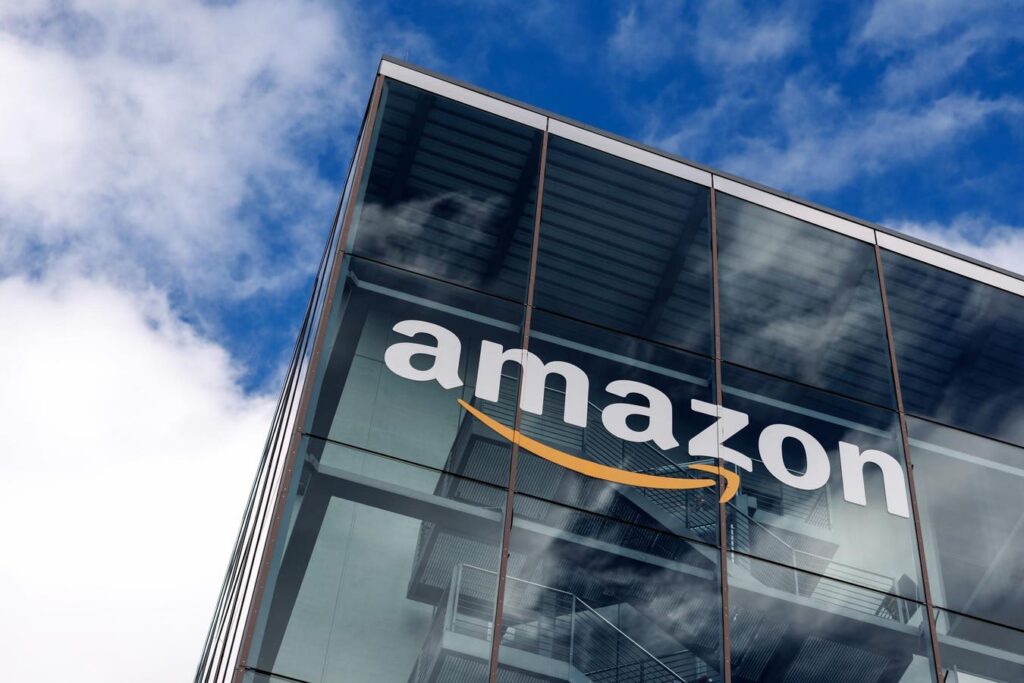Amazon’s stock has declined approximately 18% this year, largely due to investor concerns about potential tariff impacts on its business model. This is particularly significant as Amazon’s marketplace relies heavily on third-party sellers from China, making it vulnerable to import tariff increases. Even if the Trump administration eventually reduces these tariffs, Amazon’s operations may face lasting structural changes. Additionally, broader tariff-driven inflation could dampen consumer purchasing power, further impacting Amazon’s retail sales. Separately, What’s Going On With META Stock?
Looking at a longer timeframe reveals an even more concerning picture: since early 2022, Amazon’s stock has gained only about 9% over three years. This underperformance can be attributed to several key factors:
- A substantial 36% reduction in Amazon’s P/E ratio, dropping from 51.5 in 2021 to 32.7 currently
- A 4% increase in outstanding shares, now totaling 10.7 billion
- Despite these challenges, net profits have increased by 78%, growing from $33 billion to $59 billion
Now, of course, individual stocks are more volatile than a portfolio — and in this environment, if you seek upside with less volatility than a single stock, consider the High-Quality portfolio, which has outperformed the S&P 500 and achieved returns greater than 91% since inception.
Revenue Growth Analysis
Amazon has demonstrated solid fundamental performance with a 36% revenue increase, growing from $470 billion in 2021 to $638 billion in the trailing twelve months. This growth is driven by several sustainable factors:
- E-commerce Dominance: Amazon maintains its leadership position with approximately 38% of the US digital shopping market, enabling multiple revenue streams through its marketplace and advertising ecosystem.
- Strategic Diversification: The company has successfully expanded beyond retail into higher-margin businesses, most notably Amazon Web Services (AWS).
- Differential Growth Rates: AWS has been the standout performer, averaging 20% annual growth between 2021 and 2024, significantly outpacing North American retail (11%) and international segments (4%). This validates Amazon’s long-term investments in data centers, e-commerce infrastructure, and logistics networks.
Profitability Improvements
Amazon’s net income margin has improved by approximately 31%, increasing from 7.1% to 9.3% during this period. This margin expansion primarily stems from the increasing contribution of AWS, which operates at substantially higher margins than the retail business. As AWS constitutes a larger percentage of overall revenue, it positively impacts the company’s aggregate profit margins.
The combination of revenue growth and margin expansion has resulted in a 71% increase in earnings per share, rising from $3.24 in 2021 to $5.53 in the last twelve months.
Valuation Concerns and Investment Outlook
Despite strong operational improvements, Amazon’s P/E ratio has contracted by 36% (from 51.5 to 32.7) since 2021, reflecting several investor concerns:
- Market Volatility: The 2022 inflation spike triggered a 52% stock drop (from $170 to $82), exceeding the S&P 500’s 25.4% decline. Amazon didn’t recover to pre-crisis levels until February 2024.
- Current Headwinds:
- Potential tariff impacts on profitability and third-party seller dynamics
- Recession risks that could reduce both consumer spending and corporate cloud investments
- Massive AI-related capital expenditures ($260 billion since 2021, with $100 billion planned this year) with uncertain returns
Given these uncertainties, investors should ask themselves critical questions: Do you want to hold on to your AMZN stock now? Will you panic and sell if it starts dropping further?
Holding on to a falling stock is never easy. While Amazon remains fundamentally strong with impressive growth and improving profitability, investors seeking to preserve wealth in volatile markets might consider alternative strategies. Trefis works with Empirical Asset Management—a Boston area wealth manager—whose asset allocation strategies yielded positive returns even during the 2008-09 period when the S&P lost more than 40%. Empirical has incorporated the Trefis HQ Portfolio in this asset allocation framework to provide clients better returns with less risk versus the benchmark index; less of a roller-coaster ride, as evident in HQ Portfolio performance metrics.
Read the full article here
















